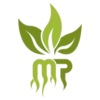Oregano (Origanum vulgare) is native to the Mediterranean region, particularly in areas around Greece, Turkey, and Italy. It has been used for thousands of years as a culinary and medicinal herb, with its use dating back to ancient Greece and Rome. The name "oregano" comes from the Greek words "oros," meaning mountain, and "ganos," meaning joy, reflecting its abundant growth in the mountainous regions of the Mediterranean.
Prune oregano regularly to prevent it from becoming woody and to encourage new, tender growth. Trim the stems back by one-third after each harvest. Pinch off flower buds as they appear to keep the plant focused on producing leaves rather than flowers.
Harvest oregano leaves as needed throughout the growing season. For the best flavor, harvest in the morning after the dew has dried. Cut stems just above a leaf node, and use fresh or dry for later use. Drying oregano concentrates its flavor and makes it a convenient kitchen herb year-round.
General Prevention: To prevent pest infestations, maintain good garden hygiene by removing any dead or decaying plant material. Space plants adequately for proper air circulation and water at the base to prevent fungal diseases. Mulching can help retain moisture and suppress weeds, ensuring the oregano plant remains healthy and robust.
